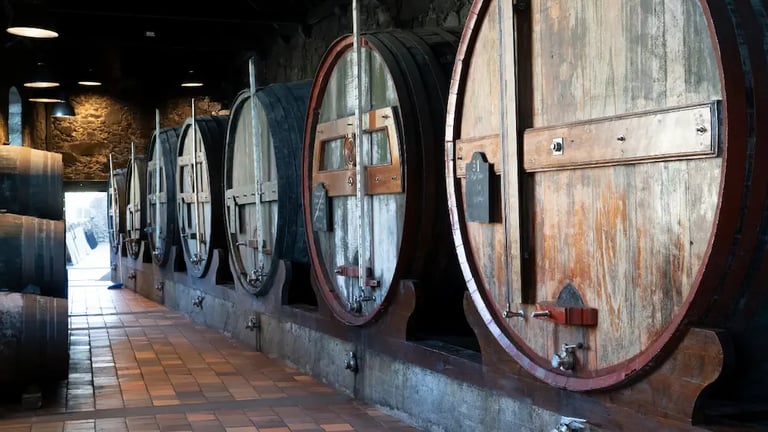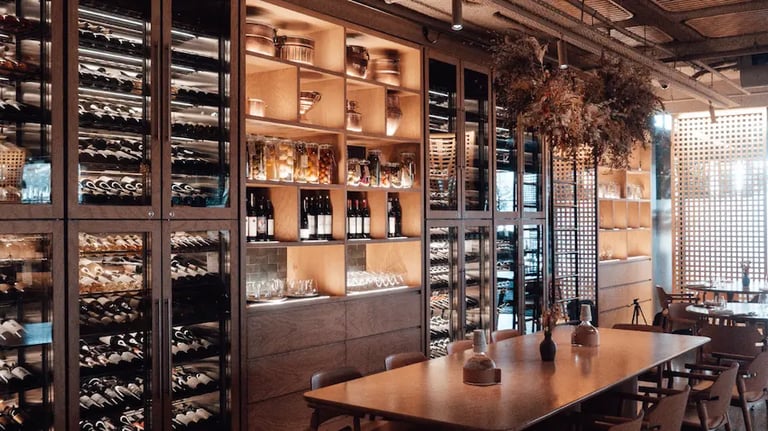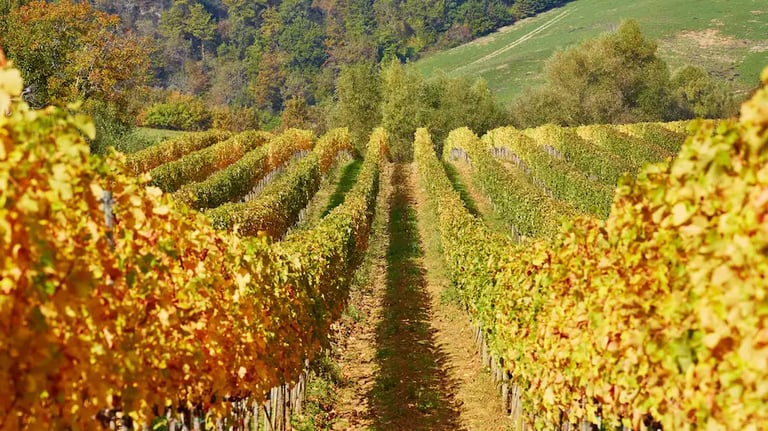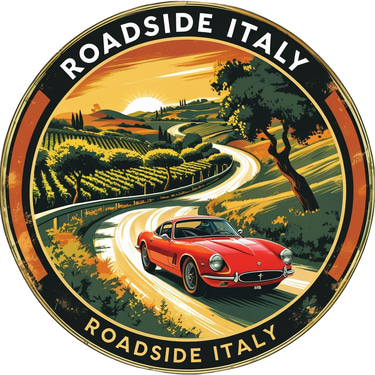Best Wine Tours in Tuscany Italy from Florence – Discover Top Wineries & Hidden Gems
Join the best wine tours in Tuscany Italy from Florence and discover the magic of Chianti’s rolling vineyards. Explore world-famous wineries in Florence Italy, taste authentic Tuscan reds, and enjoy unforgettable Florence Italy wine tours through breathtaking countryside and medieval villages.
FOODTOSCANA
Tuscany’s wine heritage goes back centuries – Chianti Classico was legally defined in 1716, making it one of the world’s oldest appellationswinetourism.com. Today Florence sits at the very edge of these famed vineyards. From the city’s Duomo you can be sipping Chianti within an hour. In fact, “Florence winery” searches really mean the wineries of the Colli Fiorentini just outside the city, the Chianti sub-area whose clay soils yield light, fruity Sangiovese-based redswinepaths.com. Whether you join a wine tour in Tuscany Italy from Florence, hire a car, or even hop a bus, Florence is the perfect hub. You’ll be immersed in rolling vineyards, medieval castles and wine cellars, with guides or on your own.
Tuscan wines are dominated by Sangiovese grapes, and Tuscany’s regions each have their signature styles. In the Florentine hills you’ll find the gentler Colli Fiorentini Chiantiswinepaths.com, while south of Florence the Chianti Classico heartland yields rich cherry-and-spice redswinetourism.com. Beyond Chianti are Brunello di Montalcino’s powerful Sangiovese (Sangiovese Grosso) and Montepulciano’s elegant Vino Nobile. Famous white Vernaccia di San Gimignano comes from that towered hill town. Even lesser-known zones like Carmignano (just west of Florence) make Sangiovese blends with a dash of Cabernetwinalist.com. Each area has its own scenery and wine character – but from Florence it’s all within reach, especially via day tours or relaxed road trips.
Tuscan Wine Regions
Chianti (Classico and Rufina). The Chianti zone lies between Florence and Sienawinetourism.com. Chianti Classico DOCG (heartland around Greve, Radda, Castellina, Gaiole) is famed for medium-to-full-bodied Sangiovese wines with bright cherry, spice and earthy noteswinetourism.com. (Chianti Classico was the world’s first DOC, and its wines must be ≥80% Sangiovese.) Just a few miles northeast of Florence is Chianti Rufina DOCG, the smallest, highest sub-zone. Rufina’s cooler, hillside sites produce “elegant, tannic” Sangiovese wines with “prized acidity” and flavors of wild berries and spicebellinicantine.it, often bottled as single-varietal reds.
Montalcino – Brunello. About 70 km south of Florence lies hilltown Montalcino, whose name is inseparable from Brunello di Montalcino. Brunello is Tuscany’s richest, long-aging wine – all made from 100% Sangiovese Grosso (locally called Brunello). By law Brunello must age at least 5 years in oak/barrel before releasewinetourism.com. The result is a structured, powerful red with depth and ripe red/black fruit aromaticswinetourism.com. Today Montalcino is one of Italy’s most celebrated wine towns, drawing visitors to its overlooks and cellars. (Nearby you’ll also find Rosso di Montalcino – a younger, quicker-to-market Sangiovese from the same area.)
Montepulciano – Vino Nobile. South of Siena, the medieval town of Montepulciano lends its name to Vino Nobile di Montepulciano DOCG. Like Brunello, Vino Nobile is primarily Sangiovese-based (locally Prugnolo Gentile) – at least 70% – blended with small amounts of other local varietieswinetourism.com. This wine is known for elegance: smooth tannins, violet and cherry aromas, and a long finishwinetourism.com. In fact, Montepulciano was the first Tuscan wine to gain DOCG status (in 1980)winetourism.com. The vineyards sit on clay and limestone soils, and dry farming means outstanding ripeness. The quaint town’s cellars and cantinas, plus the nearby villages of Montefollonico or Torrita, make for great wine-focused day trips.
San Gimignano – Vernaccia. The hilltown of San Gimignano (with its skyline of medieval towers) is surrounded by vineyards of Vernaccia di San Gimignano – a white wine. Vernaccia (a unique, ancient grape) was Italy’s first DOC wine (1966) and is now DOCGen.wikipedia.org. It is typically pale straw-yellow, dry and crisp, with citrus-peel and almond notes and a slightly bitter finishen.wikipedia.org. You’ll find modern Vernaccia often aged in oak for extra roundness, but traditional unwooded styles remain bright and refreshing. Tours here focus on the town’s heritage as much as tastings – it’s Italy’s “Medieval Manhattan” after all.
Carmignano. Closer still (just 20 km west of Florence) is tiny Carmignano DOCG, historically prized by the Medici. Today Carmignano produces bold red blends: minimum 50% Sangiovese, plus often up to 20% Cabernet Sauvignon (and Cabernet Franc)winepaths.com. The addition of Cabernet gives the wine extra body, dark fruit and tobacco flavors. Carmignano’s sites sit on the Monte Albano foothills, with grapes enjoying long sunshine. The result is a refined red – more supple than sharp Chianti Classico – often able to age beautifully for a decade or more. Because the appellation is so small, production is limited and you won’t see Carmignano wines everywhere, making a visit feel like a special discoverywinalist.com.
Together, these regions represent Tuscany’s main wine map. (Beyond them lie others like coastal Bolgheri or Maremma Super Tuscans, but those are farther afield for a Florence-based traveler.) In each zone the local DOCG/DOC rules enforce mainly Sangiovese grapes (though blended generically with lesser grapes). Practically speaking, sampling Tuscany means tasting a lot of Sangiovese in its many guises – from the light, fruity Chianti Colli Fiorentini to the majestic Brunello di Montalcinowinetourism.comen.wikipedia.org.
Exploring Tuscan Wine: Tours, DIY & Public Transit
Whether you’re a laissez-faire traveler or want a guided experience, Tuscany offers all options. Many companies run Florence Italy wine tours – small-group or private – with English-speaking guides. For example, Viator lists multiple Chianti tours departing Florence: half-day tastings or full-day trips that hit 2–3 vineyards with lunches and tastings includedchianti.com. Others like Walks of Italy, The Roman Guy or local operators offer similar packages. These often include hotel pickup, an air-conditioned van, guided vineyard walks and tastings of Tuscan staples (think Chianti Classico and local olive oil). Taking a guided tour means no logistics on your part: you just sit back, sip Sangiovese, and enjoy the countryside.
If you prefer private travel, you can hire a car and driver (an NCC service) for a bespoke wine day. Many Tuscan drivers double as wine guides. As Chianti.com notes, you can “give your driver your itinerary” and relax while they handle navigation and schedulingchianti.com. This allows maximum flexibility (visit exactly which wineries you like) and most importantly, everyone can taste because someone else is driving. (Just be sure to discuss fees – often sold as a flat day rate plus tasting costs – and tip the driver.)
For the ultimate freedom, you can rent a car yourself. This requires some planning: rural Tuscan roads wind through hills, so map your route carefully. Good navigation (GPS or offline maps) and a bit of Italian road smarts are key. Driving lets you reach remote gems, stay for multiple tastings at one estate, and linger at countryside lunch spots. However, remember that some wineries require reservations or have fixed tasting times, so research ahead.
By Public Transit (No Car): If you don’t rent a car or hire a driver, it’s still possible. The main train line out of Florence (towards Siena/Bologna) doesn’t cross the Chianti hills, but you can combine trains and buses. For example, the SITA bus line 365 departs Florence Santa Maria Novella station and goes to Greve, Castellina and Radda in Chiantitickets-florence.it. In practice you might take bus 365 to Greve (45 min from Florence) and then walk or take a local taxi to nearby vineyards like Castello Vicchiomaggio or Verrazzano. Chianti.com even lists wineries reachable by bus from Florence: e.g. Vicchiomaggio (Greve, tours almost daily) and Verrazzano (Greve)chianti.comchianti.com. For Montalcino or Montepulciano, transit is more complex (train to Chiusi or Siena plus a local bus), so many travelers prefer an organized day tour instead.
DIY Wine Tours: Some visitors simply plan a “do-it-yourself” wine day. A common approach: take the bus to a Chianti hub like Greve, have lunch there, then walk to a couple local estates. For instance, Chianti.com suggests the tiny Viticcio vineyard on the hill above Greve (“just a short walk outside town”) as a perfect independent visitchianti.com. In Montepulciano, you can reach the hills by bus from the train station and visit wineries on foot or by local taxi. Always check the Chianti Consortium (Chianticlassico.com) or winery sites for reservation requirements – many Chianti Classico producers allow visitors without a large tour if you book a tasting slot in advance.
Guided vs. Self: A guided Florence wine tour can pack in more – often 2–3 wineries in a day – and handle all entry fees. A DIY day tends to be more relaxed, with time for grazing on local salumi or art en route, but it requires careful timing. Either way, always designate a sober driver or book transportation. (In Tuscany, drinking and driving is taken seriously. Even small tours include a driver in the pricechianti.com.)
Top Wineries to Visit (Websites & Maps)
Below are some not-to-miss Tuscan wineries, famous for their wines and tours. Each entry includes the official website and a Google Maps link. Book ahead when possible, especially for popular estates.
Castello di Ama (Gaiole in Chianti) – A hillside estate known not only for its Chianti Classico but also contemporary art installations. Website: https://www.castellodiama.com – Google Maps: https://www.google.com/maps/search/?api=1&query=Castello%20di%20Ama
Castello di Brolio (Barone Ricasoli) (Gaiole in Chianti) – Founded in 1141, this historic castle pioneered Chianti. Their Brunello, Chianti Classico and Supertuscan wines are legendary. Website: https://www.ricasoli.com – Google Maps: https://www.google.com/maps/search/?api=1&query=Castello%20di%20Brolio
Castello Vicchiomaggio (Greve in Chianti) – A charming castle near Greve. Tours here are nearly daily and include a stroll through manicured vineyards. Website: https://www.vicchiomaggio.it – Google Maps: https://www.google.com/maps/search/?api=1&query=Castello%20Vicchiomaggio chianti.com
Castello di Verrazzano (Greve in Chianti) – A sprawling estate on the Chianti Route, offering cellar tours, olive oil tastings and classic Chianti wines. Website: https://www.verrazzano.com – Google Maps: https://www.google.com/maps/search/?api=1&query=Castello%20Verrazzano chianti.com
Castello di Nipozzano (Frescobaldi) (Pelago, Chianti Rufina) – An iconic estate in Rufina. Their Frescobaldi wines (Nipozzano Riserva) exemplify Chianti Rufina’s bright acidity. Website: https://www.frescobaldi.com/en/tenute/castello-di-nipozzano/ – Google Maps: https://www.google.com/maps/search/?api=1&query=Castello%20Nipozzano
Marchesi Antinori (Villa Antinori nel Chianti Classico) (San Casciano Val di Pesa) – The new Antinori winery & museum is a modern marvel and includes tastings. (The older Villa Antinori near Florence is closed.) Website: https://www.antinori.it – Google Maps: https://www.google.com/maps/search/?api=1&query=Antinori%20Chianti%20Classico
Castello Banfi (Montalcino) – Known for Brunello di Montalcino and a vast estate with vineyards and olive groves. Also has a wine museum and resort. Website: https://www.castellobanfi.com – Google Maps: https://www.google.com/maps/search/?api=1&query=Castello%20Banfi
Avignonesi (Montalcino/Montepulciano) – A biodynamic leader in Tuscany, famous for its organic Brunello. Their castle (Monticchiello, near Pienza) offers luxury tasting experiences. Website: https://www.avignonesi.it – Google Maps: https://www.google.com/maps/search/?api=1&query=Avignonesi
Salcheto (Montepulciano) – A sustainable estate producing Vino Nobile di Montepulciano, famed for its innovative carbon-neutral winery and pure wines. Website: https://www.salcheto.it – Google Maps: https://www.google.com/maps/search/?api=1&query=Salcheto
Tenuta Torciano (San Gimignano) – A well-known agriturismo and winery in San Gimignano, offering broad tastings (Vernaccia, Supertuscans, Brunello, etc.) in a festive setting. Website: https://www.tenutatorciano.com – Google Maps: https://www.google.com/maps/search/?api=1&query=Tenuta%20Torciano
Tenuta di Capezzana (Carmignano) – The oldest estate in Tuscany (with Etruscan roots). Famous for Carmignano DOCG and also produces Vin Santo and olive oil. Website: https://www.capezzana.com – Google Maps: https://www.google.com/maps/search/?api=1&query=Tenuta%20di%20Capezzana
Fattoria Fèlsina (Castellina in Chianti) – An acclaimed Chianti Classico producer (organic vineyards) known for robust reds. Website: https://www.felsina.it – Google Maps: https://www.google.com/maps/search/?api=1&query=Felsina
Lamole di Lamole (Panzano in Chianti) – A hilltop cooperative producing hand-crafted Chianti Classicos (organic practices). Website: https://www.lamole.com – Google Maps: https://www.google.com/maps/search/?api=1&query=Lamole+di+Lamole
Each of these wineries (and many others) welcome visitors by appointment. Be sure to book tastings or tours in advance via their websites. (Even if you arrive without a booking, staff often have last-minute openings if you’re lucky.)
Hidden Gems & Forum Favorites
Beyond the famous estates, travelers on forums rave about “secret” wineries worth the detour:
Podere Campriano (Greve in Chianti) – A tiny, family-run organic vineyard just above Greve. Guests describe it as a warm, homey experience with organic Chianti Classico winespoderecampriano.it. The owners even offer cooking classes on-site. Website: https://www.poderecampriano.it – Google Maps: https://www.google.com/maps/search/?api=1&query=Podere%20Campriano
Montefioralle (Greve in Chianti) – A boutique, 5-hectare winery near Greve. Forum reviews call it “authentic” and note the fantastic Chianti Classico and hospitalitytripadvisor.com.sg. Visits are by appointment. Website: https://www.montefioralle.wine – Google Maps: https://www.google.com/maps/search/?api=1&query=Montefioralle+Greve
Viticcio (Greve in Chianti) – A very small vineyard on the hill above Greve. It’s reachable by a short taxi or walk from the bus stop. They do highly personal tastings (sometimes with lunch) in a rustic cellar. Chianti.com gives it 4 stars for atmospherechianti.com. Google Maps: https://www.google.com/maps/search/?api=1&query=Viticcio
Agricola Uzzano (Castello di Uzzano) (Greve in Chianti) – Located right in Greve’s town center, this old farmhouse hides a wine cellar. They make classic Chianti Classico and Vin Santo. It’s very convenient – the Greve bus stop is literally at their doorstepchianti.com. Website: https://www.agricolauzzano.com – Google Maps: https://www.google.com/maps/search/?api=1&query=Agricola%20Uzzano
Fattoria del Cerro (Acquaviva, Montepulciano) – A large estate outside Montepulciano, making upscale Vino Nobile (they are the area’s largest Vino Nobile producer). Visitors highlight the estate’s scenic vineyards and top-notch winetripadvisor.com.sg. The farmhouse also has a fine restaurant. Website: https://www.tenutedelcerro.it/en – Google Maps: https://www.google.com/maps/search/?api=1&query=Fattoria%20del%20Cerro
These lesser-known spots give you a very Tuscan experience – intimate settings, family winemakers and (often) organic vineyards. Many are bookable via email or their sites.
Biodynamic/Organic Wineries: Throughout Tuscany, sustainability is big. Look for keywords like “organic” or “biodynamic” on winery sites. For example, Podere Campriano advertises organic Chianti Classico productionpoderecampriano.it. Other organic/biodynamic leaders include Querciabella and Fèlsina (Chianti Classico), Avignonesi (Montalcino), Salcheto (Montepulciano) and Tenuta Caparsa (San Gimignano). Tastings at these estates often highlight minimal-intervention methods. If green practices matter to you, these estates clearly label their wines as organic.
Day Trips with a Wine Focus
Florence is ideally situated for day trips into wine country:
Chianti – A classic day trip (just 30–60 minutes south of Florence by car or tour). Spend a day winding through villages like Greve and Castellina, stopping at 1-2 vineyards for tours and tastings. Winalist notes that even a “just an hour day trip from Florence” can land you in Chianti’s rolling vineyardswinalist.com. In Greve, grab lunch in the piazza, then walk to nearby castles (Vicchiomaggio, Verrazzano) for tastings. The “heart of Chianti” trip usually includes 2 wineries and a Tuscan lunchwinalist.comwinalist.com. On summer weekends these tours fill up, so book a few months in advance.
San Gimignano (Vernaccia) – About 1 hour west of Florence, the medieval town of San Gimignano is great for combining sightseeing with wine. As Winalist suggests, you can “visit San Gimignano wineries” on a guided tour pairing local Vernaccia whites with pecorinowinalist.com. Or simply wander the towered streets, then walk downhill to a vineyard like Panizzi or Caparsa for a Vernaccia tasting and dinner. The views of the Tuscan plains from these vineyards are spectacular at sunset.
Montalcino & Val d’Orcia (Brunello) – A bit farther (roughly 2 hours by car or organized tour) is Montalcino, home of Brunellowinalist.com. You can do a full-day from Florence: visit one or two wineries around Montalcino (with a stop in the fortress or hill town itself), and perhaps continue through the Val d’Orcia to see Pienza’s cheese shops or Montepulciano. Note that public transit is tricky, so most visitors take a wine tour or drive. Winalist calls Montalcino “an unmatched wine and food experience”winalist.com – think bold reds, olive oils and hearty Tuscan cuisine.
Siena (with Wine Tasting) – Siena itself isn’t a wine region, but it’s a popular culture day trip (1.5h by train)winalist.com. You can easily include a winery visit: the areas just south of Siena are Chianti Classico. Some tours do a combo “Siena + winery” day. Or take a half-day wine tour (Chianti or Brunello) and half-day free time in Siena.
Lucca / Pisa (Wine on the Side) – North of Florence are Lucca and Pisa, mainly sightseeing spots. (Lucca even has its own small DOC area, but it’s mostly red blends.) Pisa’s lean tower might not scream wine, but there are Ortona and Cinque Terre wines near there. These destinations are more about variety: e.g. visit Pisa’s piazza then enjoy a regional red at dinnerwinalist.com.
In general, book any organized day tour from Florence at least 1–2 months ahead, especially in spring/summer when demand is high. Self-driving day trips allow more flexibility but require early starts (roads and winery hours close by sundown). Winalist’s day-trip roundup notes that Florence is well-connected by train/bus to many regions; for example, you can reach Siena or Pisa by train in ~1–1.5 hourswinalist.comwinalist.com. (Just confirm the return schedules – Tuscany evenings can be quiet after 7pm.)
Wine Country Stays
Many visitors choose to overnight in the country to fully unwind. Below are a few recommended wine-country accommodations (websites provided). These range from farmhouse B&Bs to luxury relais – all have good wine or vineyard connections:
Castello di Spaltenna (Gaiole, Chianti) – A 5-star relais with pools and spa, surrounded by vineyards. Website: http://www.spaltenna.it
Villa Vignamaggio (Greve, Chianti) – An historic villa (famous as Boticelli’s muse) offering rooms, pool, and tours of its vineyards. Website: http://www.vignamaggio.com
Podere Le Ripi (Montepulciano) – A charming agriturismo run by a former Italian ambassador. They host wine tastings and classes. Website: http://www.podereleripi.it
Castiglion del Bosco (Montalcino) – Ultra-luxe resort with golf course and Brunello tastings, set on Dolce & Gabbana’s estate. Website: http://www.castigliondelbosco.com
Castello Banfi Il Borgo (Montalcino) – The guest village at Banfi estate, walking distance to their winery, with pools and country chic rooms. Website: http://www.castellobanfi.com
Villa Le Corti (Carmignano) – A villa-based agriturismo with an on-site winery and olive oil mill, plus cooking lessons. Website: http://www.villalecorti.it
Fattoria di Maiano (Florence hills) – A short drive from Florence, this historic farm has gardens, a small vineyard and tastings, plus simple rooms. Website: http://www.fattoriamaiano.it
When choosing where to stay, consider your wine plans: as Italy&Wine notes, “Florence is ideal for Chianti Classico… Siena is better if you’re focusing on Montalcino/Montepulciano”italyandwine.net. If you plan multiple days in Chianti, staying in a Chianti villa or agriturismo (like the ones above) can save daily driving. If you want one night in wine country, it’s delightful to fall asleep under the vines and wake up for a morning tasting or leisurely brunch.
When to Go & Booking Tips
Tuscany is lovely year-round, but some seasons sparkle for wine travel:
Spring (April–June) – Prime time. The weather is warm (not hot), vineyards turn green, and wineries reopen after winter. In May, look out for Cantine Aperte (Open Cellars), a nationwide event where many Tuscan wineries host tastings and festivitiesfirenzemadeintuscany.com. It’s crowded but festive – book anything (tours, hotels) 2–3 months ahead if you go in May-June.
Summer (July–August) – Peak tourist season. Days are hot and many vineyards have baked-earth views, but Chianti tours do not skip a beat. (Ask for an indoor tasting room if 30°C sunshine is tiring.) Many restaurants/wineries may take a brief August holiday, so check availability. If traveling in summer, reserve your winery visits and hotels at least 3–6 months in advanceitalyandwine.net to avoid disappointment.
Harvest (Late Sept–Oct) – Arguably the best time for wine lovers. The Vendemmia (grape harvest) is in full swing, creating a buzz at the wineriestickets-florence.it. The landscape is golden and festivals pop up (you can often watch or even help with picking). Chianti.com notes September is “crucial” for wine and less crowded than summerkinglikeconcierge.com. However, weekends can sell out, so plan tours and lodging ahead. Early October is a bit quieter but weather is still pleasant.
Winter (Nov–Mar) – Quiet season. Wine country is much less crowded (and some cellars close for holidays). Daytime can be chilly and rainy (though skiing is nearby in the Apeninnes). This can be good if you prefer a cozy tasting by the fire or walking vineyards without crowds. On the downside, winery hours may be reduced and some guided tours are suspended. Still, if you pick sunny winter days, the low-season rates and lack of lines make it special.
Book Ahead: In any season, many Tuscan wineries require appointments (especially the big names like Antinori, Banfi, or Biondi-Santi). Italy&Wines advises “booking tours well ahead ensures availability”italyandwine.net. I recommend securing at least your top 2-3 winery visits before arriving – especially if they’re on a specific date. For general travel, booking accommodations 2-3 months ahead is wise in high season, while 1 month ahead may suffice in shoulder seasons.
Crowds: Expect peak crowds June–Sept (and around major events). If you prefer a relaxed pace, aim for April–May or September. Tuscany’s local tourism association notes that September (harvest) has fewer international tourists than July/Aug but still lots of winery lifekinglikeconcierge.com. February–March are quietest; some vineyards prune vines by a fireplace.
Tips for First-Time Visitors
Limit your hits per day. It may be tempting to visit 4 wineries, but pacing is key. Two to three tastings (with a nice lunch break) is more enjoyableitalyandwine.net. Don’t rush from vineyard to vineyard – savor the view and the slow pace of the Tuscan hills.
Stay hydrated and eat. Drink lots of water between wines (it’s hot here in summer). Always combine tastings with some bread or local snacks: most tours include bread, cheese or salumi to cleanse your palate. Enjoy the local cuisine – a full Tuscan lunch (bruschetta, pasta, Florentine steak) pairs wonderfully with the wines you’ve tasted.
Dress comfortably. Expect walking through vineyards and sometimes gravel cellar floors. Wear sturdy shoes and sun protection (a hat and sunscreen). Some estates require modest attire for tasting rooms, but usually Tuscan farm wear is casual.
Learn a bit of wine lingo. Even if you’re new, know terms like “Sangiovese,” “riserva,” “DOCG”. Many Tuscan reds are aged in oak (look for “Riserva” on the label) or blended with Cabernet or Merlot (Chianti Riserva or Supertuscans). A quick glance at the bottle labels or websites can tell you grape varieties. The winery staff will guide your tasting (“this Brunello spent 24 months in oak”), but having some vocabulary helps you engage.
Use Google Maps. Rural Tuscany has spotty signage. We’ve listed Google Maps links above for each winery. If driving or taking a taxi, plug these URLs into your map app to find the place. (For example, “Google Maps: Castello di Verrazzano” in your smartphone will show the exact estate.)
Respect the wine culture. Italians take wine seriously but enjoy it casually. Don’t clink glasses overly formally; “cin cin” is fine. Thank your hosts – tips of €5–10 per person for a tasting or tour guide are appreciated. Buying a bottle or two to take home is one of the best ways to support these wineries.
Remember: Florence is your base for Chianti. As a travel tip, Italy&Wines points out that Florence itself is “ideal for Chianti Classico” visitsitalyandwine.net. In practice, that means you can return to Florence each night, and still see the best Chianti vineyards. But if you plan multiple days in Val d’Orcia (Montalcino/Montepulciano), you might want one night in Siena or Montepulciano (as the same source suggests).
Book big names early. Tours of Antinori, Banfi and other famous estates sell out. If these are must-see for you, email or book online 4–6 months in advance. Smaller wineries (even if they’re on a map) often accept walk-ins or short-notice requests. But as general rule: peak season = plan well aheaditalyandwine.net.
In summary, Florence Italy wine tours range from structured tastings with guides to independent picnics among the vines. Most travelers find that wineries in Florence Italy actually lie just outside the city, but they’re easily reached. With a bit of planning (and a hearty appetite), you’ll discover why Tuscany’s wines are legendary. Salute!
If you want to skip the planning and simply enjoy the beauty of Chianti’s rolling hills, book the Da Firenze: Tour per piccoli gruppi di degustazione di vini in Toscana.
You’ll spend the day visiting boutique wineries, savoring local olive oils and cheeses, and sipping world-class Chianti wines — all with an expert local guide and comfortable transport from Florence.
Relax, taste, and let Tuscany do the rest








